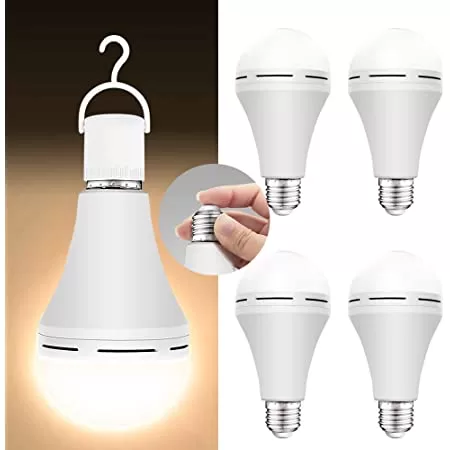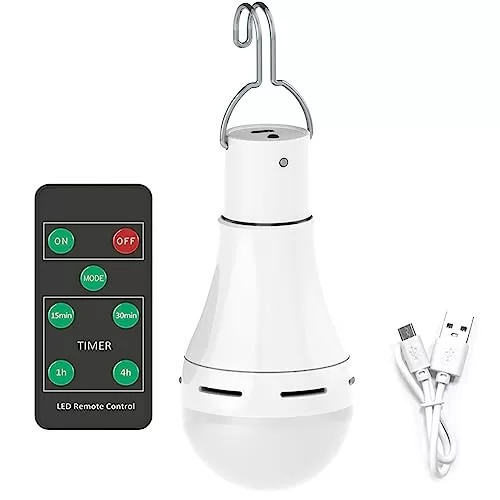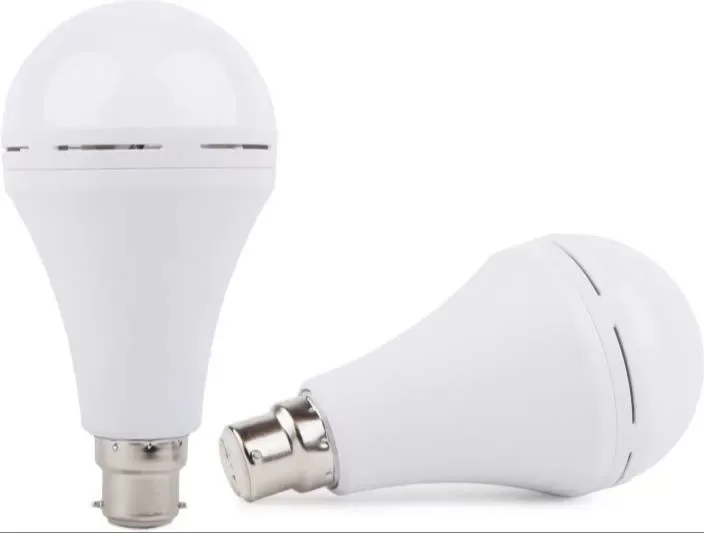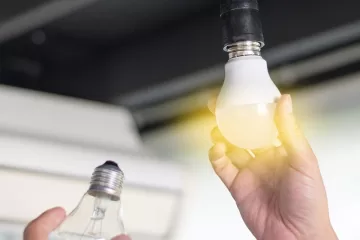In an era where sustainability and resilience are critical, technological advancements continue to drive innovation across all sectors. The rechargeable light bulb is one such invention that has received a lot of attention. With the capacity to be recharged and reused, these light bulbs, which are frequently powered by energy-efficient LED technology, are not only changing the way we brighten our homes but also addressing crucial requirements such as backup illumination during power outages. This article digs into the world of rechargeable light bulbs, investigating their advantages, uses, and the growing demand that is changing the future of lighting solutions.

The Proliferation of Rechargeable Light Bulbs
The notion of rechargeable light bulbs arose in response to the increased demand for environmentally friendly and energy-efficient lighting choices. Traditional incandescent light bulbs have long been chastised for their high energy consumption and limited lifetime. LED technology, with its superior energy efficiency and long lifetime, has ushered in a paradigm change in the lighting sector. However, the invention of rechargeable light bulbs was spurred by the necessity for a dependable backup lighting source, especially during power shortages or crises.
The advantages of LED technology are combined with the ease of rechargeability in rechargeable light bulbs. These bulbs use rechargeable batteries, commonly lithium-ion or similar versions, that store energy during regular operation. When the power supply is interrupted, whether, by a blackout or another unanticipated event, these lights automatically shift to battery-powered mode, giving a continuous source of lighting.

Highlighted Advantages
1. Energy Efficiency and Longevity
LED technology, recognized for its energy efficiency and long lifetime, is at the core of rechargeable light bulbs. LEDs use substantially less energy than typical incandescent lights, resulting in decreased power costs and carbon emissions. LEDs’ longer lifetime also leads to less waste since fewer bulbs need to be replaced over time.
2. Resilience and Emergency Lighting
An attractive aspect of rechargeable light bulbs is their capacity to operate as backup illumination during power shortages. These bulbs provide a consistent and steady source of light in locations prone to blackouts or with poor power infrastructure. This resilience is especially useful in emergency circumstances, assuring safety, security, and the capacity to carry out critical duties even when the power is off.
3. Versatility and portability
Rechargeable light bulbs are often portable, enabling them to be readily moved and utilized in a variety of locations. These portable light sources minimize the need for throwaway batteries and help to decrease waste whether camping, trekking, or navigating through dark regions.
4. Environmental Implications
As the globe grapples with the effects of climate change, the necessity of long-term solutions cannot be stressed. Rechargeable light bulbs adhere to sustainability standards by lowering energy use and waste. These lighting solutions contribute to a cleaner future by recharging and extending the lifetime of each bulb using renewable energy sources.

Use Cases and Applications
Rechargeable light bulbs are useful for more than just backup illumination. Their portability and energy efficiency make them appropriate for a variety of applications:
1. Emergency Planning
Access to dependable illumination may be a matter of life and death during natural disasters or unexpected situations. Rechargeable light bulbs may be an important component of emergency preparation kits, providing people and families with a reliable supply of light during crucial times.
2. Outdoor Activities
Rechargeable light bulbs are a practical and eco-friendly alternative to conventional lanterns and flashlights for camping, hiking, or enjoying the great outdoors. Because of their compact form and extended battery life, they are an indispensable companion for nocturnal activities.
3. Off-Grid Living and Remote Areas
Rechargeable light bulbs provide an effective and sustainable lighting option in distant places with limited access to energy or off-grid living situations. These bulbs may be powered by solar panels or other sustainable energy sources, minimizing reliance on nonrenewable resources.
4. Everyday Application
Rechargeable light bulbs are not only for specialist applications; they may also be used in general illumination. These bulbs, whether used in homes, businesses, or commercial locations, provide energy-efficient illumination while also acting as backup lighting during power outages.

Market Demand and Trends
The market for rechargeable light bulbs has grown significantly in recent years, owing to a number of causes. The growing focus on sustainability, along with the necessity for durable lighting alternatives, has fueled demand for these cutting-edge goods. A popular pair of rechargeable light bulbs, for example, earns an amazing monthly income of around $333,000 on the Amazon platform alone. This number demonstrates the high level of public interest in rechargeable light bulbs and their potential as a mainstream lighting option.
The worldwide drive for energy efficiency and environmental concern has created an opportune atmosphere for the use of rechargeable light bulbs. Governments, organizations, and people are all realizing the advantages of LED bulbs in terms of lowering energy use and lowering carbon footprints. As a consequence, manufacturers are spending R&D to improve the performance and features of rechargeable light bulbs, therefore broadening their application and popularity.
Overcoming Difficulty
While rechargeable light bulbs have many advantages, they are not without drawbacks. The initial expense is one major source of worry. Some customers may be put off by the initial investment necessary for rechargeable light bulbs, which are often more expensive than standard options. However, long-term savings in terms of energy costs and lower replacement frequency must be considered.
Another issue is the lack of charging infrastructure, especially in areas with limited access to dependable energy. To solve this problem, manufacturers and stakeholders are investigating collaborations with renewable energy suppliers, non-governmental organizations, and government agencies to guarantee that rechargeable light bulbs may be charged using sustainable energy sources such as solar or wind energy.
The Next Steps
Rechargeable light bulbs are set to play a crucial role in determining the future of illumination as demand for sustainable and resilient lighting solutions grows. Their energy economy, lifespan, and capacity to act as emergency illumination make them a tempting alternative to typical lighting alternatives. Continuous technological and manufacturing process breakthroughs are projected to contribute to gains in price, performance, and accessibility, increasing their adoption.
Consumers, governments, and corporations may all help to accelerate the shift to rechargeable light bulbs. We can jointly contribute to a more sustainable and resilient future by making educated decisions and investing in these smart lighting solutions. We are not only brightening our present by illuminating our places with the brilliance of rechargeable light bulbs, but we are also paving the path for a brighter, greener future.















